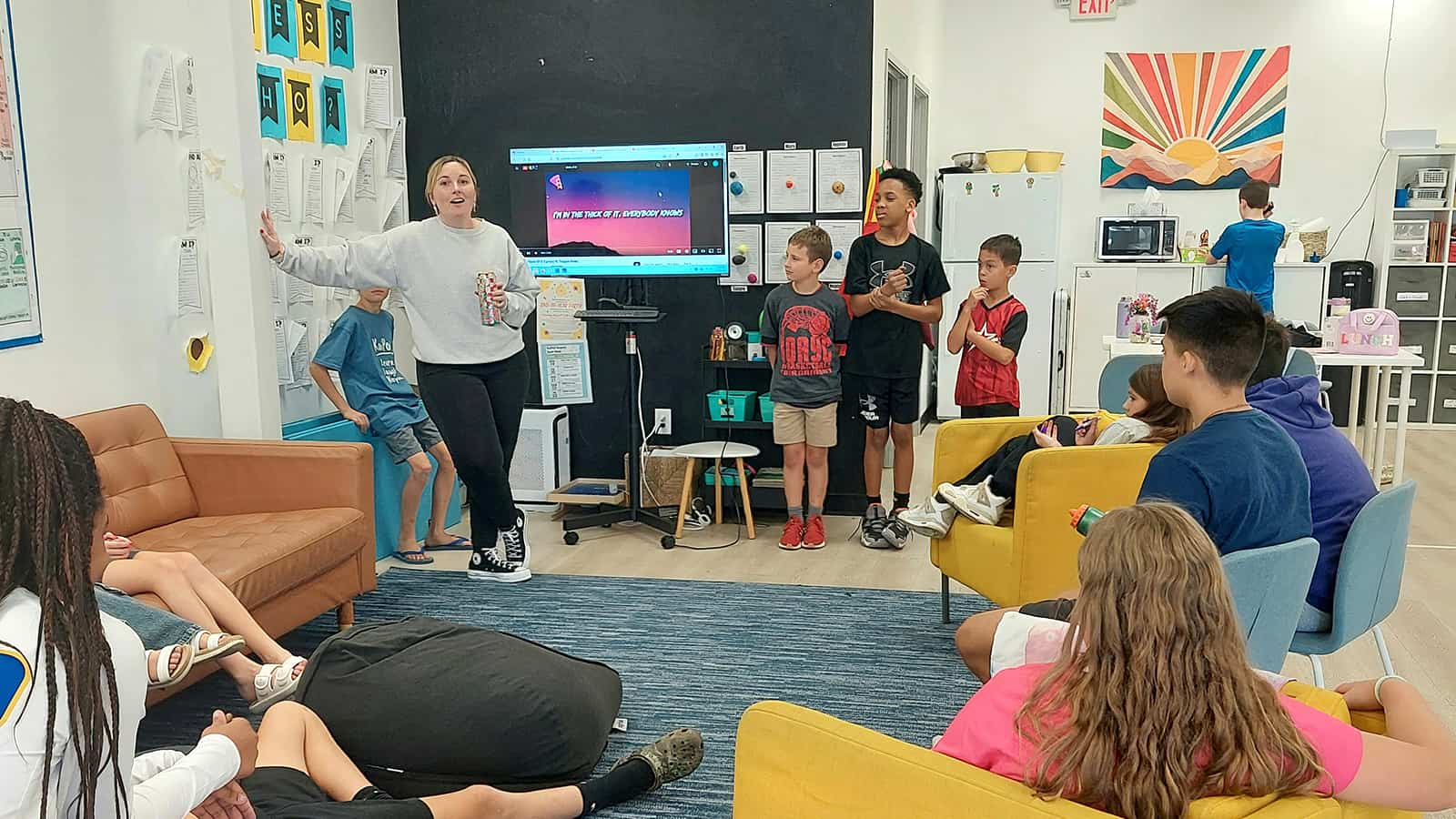Effective parent communication in Microschools can build a stronger community, support student success, and create a positive school climate. Large schools often don’t prioritize this communication, which can lead to parents feeling disconnected. Microschools are well suited to solve this problem. By fostering an environment of open communication, you can engage parents in helping to solve problems, build support systems, and achieve goals, leading to a deep sense of trust. But building trust through communication doesn’t happen right away.
Here are five foolproof tips for mastering parent communication in your Microschool:
1. Leverage Multiple Communication Channels for Parent Communication in Microschools
In an increasingly digital world, schools have the ability to connect with families in more ways than ever. Microschools can still use traditional means of communication, like newsletters, parent conferences, open houses, and phone calls home. But these communications can be supplemented by more modern ones, such as classroom websites, mobile apps, emails, and social media. These tools provide an even clearer view into the classroom.
You may wish to provide photos and videos of students at work, glimpses into everyday student routines, and snapshots of student projects. These communications help parents to feel more connected and informed about how their students are spending their day. With this information, parents can support their students’ learning at home and start conversations directly with their students about what they’re doing at school. Some common apps used to communicate or share media between the school and parents include:
This familiar social media tool allows teachers and administrators to share pictures and videos from the classroom to a closed audience. Parents will appreciate that it’s likely an app they are already familiar with.
Another familiar app for sharing content, teachers and administrators can use Facebook to share upcoming events, school updates, and other media, like pictures or videos. Groups can be private, so that only registered families can access the content.
Google Classroom
Google Classroom provides an online portal for teachers to assign work, leave student feedback, and track student progress. Parents can sign into their students’ accounts to see what upcoming assignments are due, and to check grades received on recent projects.
Class Dojo
Geared more towards elementary schoolers, Class Dojo allows teachers to share pictures and videos with specific families or the whole class. It also provides tools for behavioral and academic feedback, and allows families and teachers to message in real time.
Klassly
Klassly provides many of the features listed on apps above, with the additional bonus of allowing families to book conferences and join online video calls through the app.
Of course, anytime a classroom uses an app, social media, or website to publish information about the class, teachers and administrators should make sure that the content is available only to families with students in that classroom. This means using private profiles, website passwords, or app invitations to ensure that student information isn’t exposed online.
Special purpose apps, like Newton by KaiPod Learning, can provide a secure means of sharing photos and engaging with families.
Generally, leveraging technology to provide busy parents with a clearer idea of what’s happening in the classroom helps them to feel more connected, engaged, and able to support their learners at home.
2. Create a Welcoming School Climate
In larger schools, there is a natural limit to the number of visitors who can come and go during the school day. Not only does constant traffic through a large school create a security concern, but also it can be a disruption to classroom learning and school routines. A Microschool has the benefit of a naturally limited volume of visitors, even when the doors are open.
Consider having an open door policy, allowing parents to drop in to observe classrooms or work with students. If this seems too liberal, providing drop-in times or days can be a great compromise that still allows families the flexibility and comfort of knowing that their student’s education isn’t something that must take place behind closed doors. Offering many volunteer opportunities or inviting parents to share their talents with the school can have a similar effect.
You should also ensure that teachers and administrators are both visible and available during morning drop off times and afternoon pick up times. In a large school, teachers simply don’t have the means to talk with each parent who arrives with a concern or special consideration in the morning. At a Microschool, though, teachers can take more time to connect with parents before and after school. These quick check-ins or updates can often be the difference between a family feeling heard and welcomed, and a family feeling excluded or dismissed.
3. Invite Family Feedback
Microschools are sustained in large part by supportive families. Most of these families joined the Microschool with specific expectations and excitement about the possibilities this new educational adventure would hold. As a result, it is imperative that families are given frequent and thorough opportunities to provide feedback about their experiences with the school.
This feedback could come in many forms. Some Microschools may distribute family surveys a few times a year. Others might have listening sessions throughout the year. These tools can provide a more formal collection of feedback, but it’s important that families feel comfortable speaking up in whatever form works best for them.
Consider hosting coffee hours with the microschool leadership, think tank sessions with teachers and families, or reaching out to families personally to ask them about their experiences and expectations. Teachers can also serve as touchpoints for families, inviting feedback during conferences or classroom visits.
While not every piece of family feedback will result in change at the Microschool, simply allowing families to share their ideas will encourage their involvement and connection to the school. If you identify patterns in the feedback and decide to implement changes to address them, families will be excited and grateful to see their ideas become reality.
4. Provide Personalized Communication
Small communities like Microschools are well-suited for personalized communication. Rather than sending a template to inform families of their child’s absences, grades, or behavioral concerns, Microschools can reach out to families early, often, and personally about challenges and victories in the classroom.
The data communicated through formal reports should never come as a surprise to the Microschool family. Instead, it should serve as a summation of all the conversations, emails, text messages, and other interactions with the teacher. Sending frequent notes or emails to communicate about any changes is best practice. This is easier to do when a teacher does not have dozens of students to track.
Similarly, school-home communications should not be limited to concerns or challenges. Teachers and administrators alike can engage families through positive communications, celebrating successes, acknowledging hard work, and praising resilience.
For many families coming from a more traditional school environment, receiving a communication specific to their child, with details that reflect the teacher’s knowledge of who their child is as a learner and what their specific strengths and challenges are, will be a breath of fresh air.
5. Offer Parent Education Opportunities
Families who join the Microschool community will be a self-selected group who is naturally invested in education and the mission of the Microschool. Microschools can encourage and nurture this connection by providing parents with resources to learn even more about the educational approach, specific curriculum, and learning experiences being offered in the school.
In addition, consider providing more formal opportunities for parent gatherings and education. These could be evening events during which students teach the parents about what they’ve been learning, special speakers, presentations from teachers or administrators, or even focused, school-led roundtable discussions about timely parenting and educational issues.
Stronger Together: Microschools Building Community through Communication
When families make the choice to enroll their student in a Microschool, they are making the choice to join a community. This means that the school isn’t just a resource for their child; it’s a resource for the entire family. By engaging families in the school community, keeping families well updated on both their students’ struggles and their successes, and providing opportunities for families to be involved in the school, whether it’s through visits, volunteer work, or joining a discussion about the school’s direction, Microschools strengthen their community. Strong parent communication in Microschools ensures families are engaged advocates, which is vital for the school’s success.


